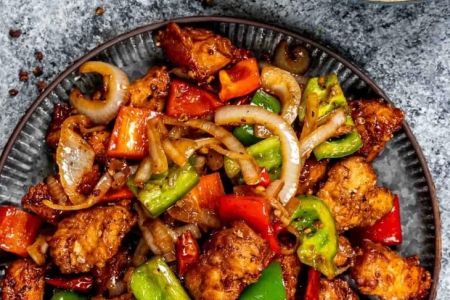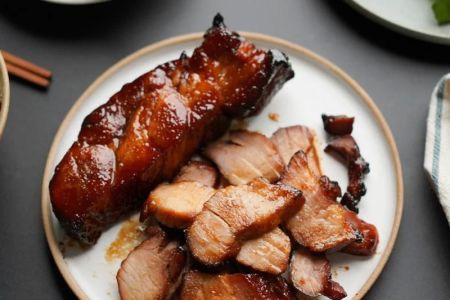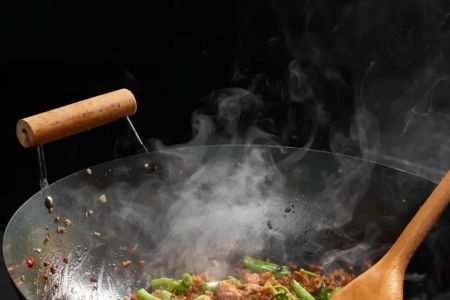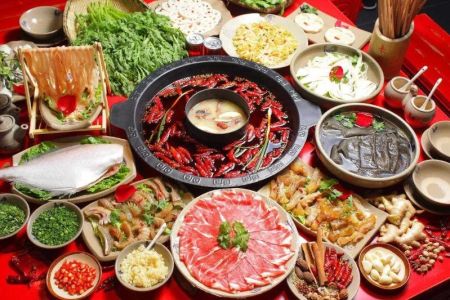What Kind of Oil Do Chinese Restaurants Use in the US?
As someone who has spent years working in Chinese restaurants, I often get asked, “What kind of oil do Chinese restaurants use?” It’s a question that might seem simple, but the answer involves a range of oils, each carefully selected for its ability to enhance the flavors and textures of Chinese cuisine. Whether you're ordering takeout or dining in a restaurant, the type of oil used can make a huge difference in your dining experience. Let’s take a deep dive into the oils commonly used in Chinese restaurants in the US, why they are used, and what makes them perfect for Chinese cooking.
1. The Basics of Chinese Cooking Oils
Chinese cuisine has a rich history, and much of its unique flavor comes from the oils used in its cooking methods. When we think of oil in Chinese food, most people immediately picture wok cooking, stir-frying, or deep-frying. These methods rely on oil that can handle high heat, impart subtle flavors, and deliver that perfect crispy texture.
One of the most commonly used oils in Chinese restaurants is vegetable oil. This oil is neutral in flavor, making it an ideal base for cooking without overpowering the delicate balance of flavors in Chinese dishes. It is also inexpensive, which makes it a practical choice for restaurants where cost-efficiency is a concern.
2. Peanut Oil: A Traditional Choice
Peanut oil is another staple in many Chinese kitchens, particularly in restaurants that focus on traditional Chinese dishes. Known for its high smoking point, peanut oil is ideal for stir-frying, deep-frying, and sautéing. What sets peanut oil apart is its slightly nutty flavor, which complements the bold seasonings and spices used in Chinese food. This oil is perfect for crispy spring rolls, fried wontons, and other deep-fried delights.
But did you know that peanut oil also carries health benefits? It’s rich in monounsaturated fats, which are considered heart-healthy. So, the next time you enjoy a crispy Chinese dish, you can feel a little better knowing the oil used in preparation is not just flavorful but also somewhat beneficial for your health!
3. Sesame Oil: Adding Flavor and Aroma
While peanut oil is great for cooking, sesame oil is a favorite for adding flavor and aroma to Chinese dishes. Unlike other oils, sesame oil is used more as a seasoning than as a cooking medium. It has a distinctive nutty flavor and is often drizzled over dishes like stir-fries, soups, or noodle dishes after they are cooked. It’s also a key ingredient in many sauces and dressings, giving them that signature “Chinese food” flavor.
There are two types of sesame oil commonly used in Chinese restaurants: light and dark. Light sesame oil is neutral in flavor and can be used for cooking, while dark sesame oil has a stronger flavor and is typically used as a finishing oil for dishes. This oil is a great addition to your home cooking as well, adding depth and complexity to your dishes with just a small drizzle.
4. Canola Oil: A Healthier Alternative
Canola oil has gained popularity in recent years, especially in restaurants looking to offer healthier alternatives. With its neutral taste and high smoke point, canola oil is a great choice for high-heat cooking, and it’s often used in Chinese restaurants for deep-frying and stir-frying. Another benefit of canola oil is that it’s lower in saturated fats compared to some other oils, making it a heart-healthier option.
Many Chinese restaurants in the US are now opting for canola oil to cater to health-conscious diners without compromising the taste of their food. Canola oil works well with a variety of ingredients, from tofu and vegetables to meat and seafood, making it a versatile choice in the kitchen.
5. Vegetable Oil: The Universal Oil
When it comes to cost-effectiveness and versatility, vegetable oil is king. This oil is made from a blend of various plant-based oils, which gives it a neutral flavor that works with almost every Chinese dish. Whether you’re preparing a stir-fry, frying rice, or cooking dumplings, vegetable oil can handle the heat and won’t alter the flavor of the dish.
It’s also a go-to oil for many restaurants because it is affordable and readily available. If you’ve ever ordered Chinese food from a fast-casual restaurant or a takeout spot, chances are the food was prepared using vegetable oil. While it may not impart the same rich flavors as peanut or sesame oil, vegetable oil does its job well in delivering a consistent and satisfying taste.
6. The Role of Oil in Chinese Cooking Techniques
Chinese cooking is all about balance, and the oil you choose plays a crucial role in achieving the right texture and flavor. Wok cooking, in particular, demands oils with high smoke points, like peanut or canola oil, so the food can be cooked quickly at high temperatures without burning. This rapid cooking method helps preserve the integrity of the ingredients while developing the perfect crispy exterior.
Deep-frying is another cooking technique that requires the right oil. Oils like vegetable or peanut oil are preferred for deep-frying because they can maintain a stable temperature during the cooking process, ensuring that the food cooks evenly and crisply. Without the right oil, the food might absorb too much grease or fail to crisp up properly.
7. Flavoring Oils and Their Unique Uses
In addition to the basic oils, Chinese restaurants often use flavored oils to enhance the taste of their dishes. For example, chili oil is a popular condiment in many Chinese kitchens. This spicy oil, made by infusing hot chili peppers into oil, is drizzled over dishes to add a punch of heat and flavor. It’s commonly used in Sichuan cuisine, where spice is a key component of many dishes.
There’s also garlic oil, which imparts a rich, aromatic flavor to stir-fries and noodles. Garlic oil is made by sautéing garlic in oil, infusing the oil with its strong flavors. It’s a great addition to many Chinese dishes, from savory stir-fries to dumplings and noodles. This oil adds an extra layer of depth to the food, giving it that delicious and distinctive taste that makes Chinese cuisine so memorable.
8. Choosing the Right Oil for Your Chinese Cooking at Home
If you're looking to recreate your favorite Chinese dishes at home, understanding the types of oil used in restaurants can help you choose the right one. For high-heat cooking like stir-frying or deep-frying, go for oils with high smoke points like peanut oil or canola oil. For flavoring and finishing dishes, sesame oil is your best bet. And if you're trying to cut down on fat, consider using vegetable or canola oil as a healthier alternative.
In conclusion, the oil used in Chinese restaurants plays a significant role in both the taste and texture of the food. By understanding the different types of oils available, you can make informed decisions whether you're cooking at home or dining out. Each oil has its unique properties that contribute to the rich and diverse flavors of Chinese cuisine, and by experimenting with them, you can discover new ways to enjoy your favorite dishes!






![Top Chinese Restaurants for Authentic Cantonese Cuisine in [Your City]](https://img.gochinarose.com/d33/2507/4157910400_450x300.webp)
